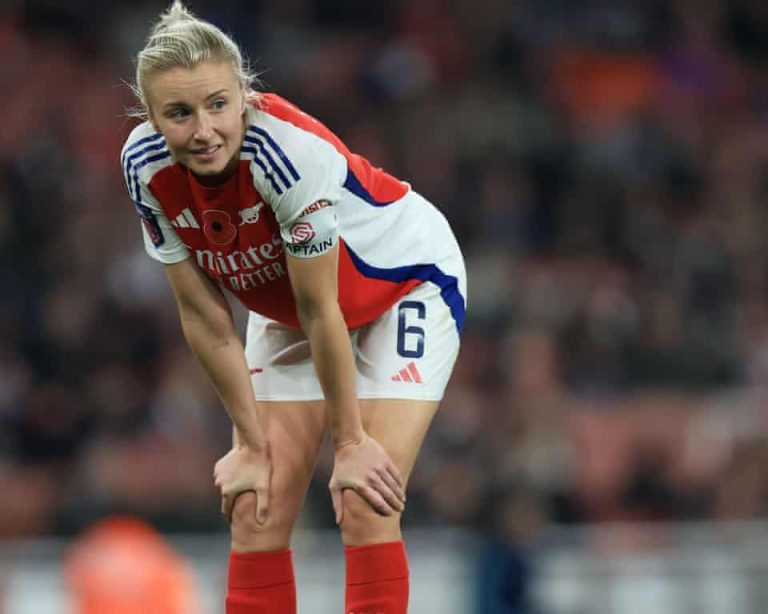Leah Williamson
England and Arsenal Women captain Leah Williamson is set to miss the start of the 2025-26 Women’s Super League (WSL) campaign after sustaining a knee injury in the final of the UEFA Women’s Euro 2025.
The injury and context
Williamson, aged 28, reported back to Arsenal with swelling in her right knee after England’s Euro 2025 final triumph. Medical scans revealed the need for a “clean-up” or minor procedure to clear the joint, which she underwent successfully. The club have said she will be out for several weeks, though not months, and the injury is not believed to be directly linked to her previous ACL injury in the same knee.
To recap the background: In April 2023, Williamson ruptured her right anterior cruciate ligament (ACL) and missed the 2023 Women’s World Cup. She returned to full fitness in early 2024 and led both club and country to significant success, including Euro 2025 glory with England and the Champions League with Arsenal.
Impact on Arsenal and team dynamics
Williamson’s absence at the start of the season is a major blow for Arsenal. She is not only a key defender and leader at centre‐back, but also the captain of the England national side, underscoring her importance. With her unavailable, Arsenal boss Renee Slegers will likely depend on other options such as Lotte Wubben‑Moy, who has signed a new contract and is expected to step up in the defensive unit.
Arsenal begin their WSL season on 6 September at home to London City Lionesses, followed by trips to West Ham United Women (12 Sept) and away to Manchester United Women (21 Sept). These fixtures come at a time when consistency and defensive solidity will be vital for Arsenal, who aim to challenge strongly domestically and in Europe after their recent successes.
Risks and recovery considerations
Although the current injury is described as a “minor procedure” rather than a full surgical reconstruction, the fact that it involves the same knee that previously required ACL surgery cannot be overlooked. The mental and physical demands of returning to top speed, positional awareness, aerial duels and sustained concentration are considerable. While linking factors are formally ruled out, the history is relevant.
From a medical and performance perspective, several key elements will factor into Williamson’s return:
Controlled rehabilitation to ensure full joint stability and absence of swelling or discomfort.
Gradual progression to full training load including game‐specific demands, particularly given the high intensity of the WSL and European fixtures.
Avoidance of rushing her back too early — given her value, the temptation may be to accelerate return, but risk of re‐injury must be managed carefully.
Psychological readiness: She has previously spoken candidly about the emotional toll of long‐term injury.
What this means for the season
For Arsenal, the early weeks of the campaign without Williamson offer both a challenge and an opportunity. On one hand, the absence of a leader may test their resilience under pressure. On the other hand, it gives other defenders and squad members the chance to step up and gain minutes — strengthening depth which is crucial given the heavy fixture schedule ahead.
Given Arsenal’s ambitions — domestic title challenge, Champions League defence, and maintaining momentum after Euro 2025 success — the timing is less than ideal. But if managed well, there is still no suggestion of a long‐term absence, and Williamson’s return later in the season could coincide with a fresh impetus for the team.
For Williamson personally, this is another test in a career already marked by injury adversity. Her previous comeback from ACL injury demonstrated her resilience and professional drive; this next chapter, while shorter in duration, demands similar focus. Given her track record, it is reasonable to believe she will return to high performance — but the key will be the timing and how Arsenal utilise the interim period.
Conclusion
Leah Williamson missing the start of the WSL season is significant for both club and country. While the knee injury requiring a procedural clean‐up is thankfully not as serious as some feared, the absence of one of women’s football’s top defenders for several weeks introduces a layer of complexity for Arsenal’s early campaign. Balanced management of her recovery, and maintaining form and unity in her absence, will be critical. For the England captain, the aim must now be a safe, strong return — ensuring she brings her best when she’s back, rather than rushing back too soon and risking prolonged setback.


